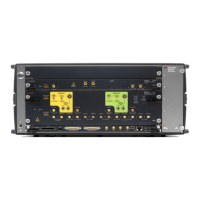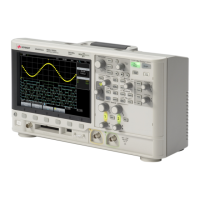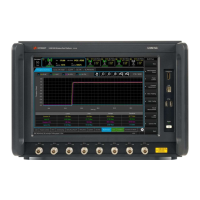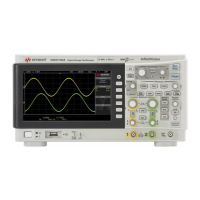Keysight M8000 Series of BER Test Solutions User Guide 589
Utilities 9
Instrument Model
SCPI guidelines require that the M8020A/M8030A is compatible with an
instrument model. This ensures that when using SCPI, functional
compatibility is achieved between instruments that perform the same
tasks. For example, if two different instruments have a programmable
clock frequency setting, then both instruments would use the same SCPI
commands to set their frequency. The instrument model is made up of a
number of subsystems.
The sub-system defines a group of functions within a module and has a
unique identifier under SCPI, which is called the Root Keyword.
Command Syntax
Commands may be up to twelve characters long. A short-form version is
also available which has a preferred length of four characters or less. In
this document the long-form and short-form versions are shown as a
single word with the short-form being shown in upper-case letters.
For example, the long-form node command SOURce has the short-form
SOUR. Using the short form saves time when entering a program;
however, using the long form makes a program more descriptive and
easier to understand.
SCPI commands may be commands only, commands and queries, or
queries only. A question mark at the end of a command indicates that it is
a query. If the question mark appears in brackets ([?]), the command has a
command and query form.
Optional Command Keywords
Some layers in the SCPI command structure are optional. These optional
keywords are indicated by square brackets ([]). A typical use for these
types of keywords is with a command that is unique to one module. In this
case, the top layer (Root Keyword) of the command structure may be
omitted.
For example, the following command code segments are functionally
identical:
[:SOURce]:JITTer[:GLOBal][:STATe] <ON|OFF|1|0>
:JITTer <ON|OFF|1|0>
:JITT <ON|OFF|1|0>
:jitt <ON|OFF|1|0>
Note that it is not necessary to include the syntax inside the square
brackets ([]).

